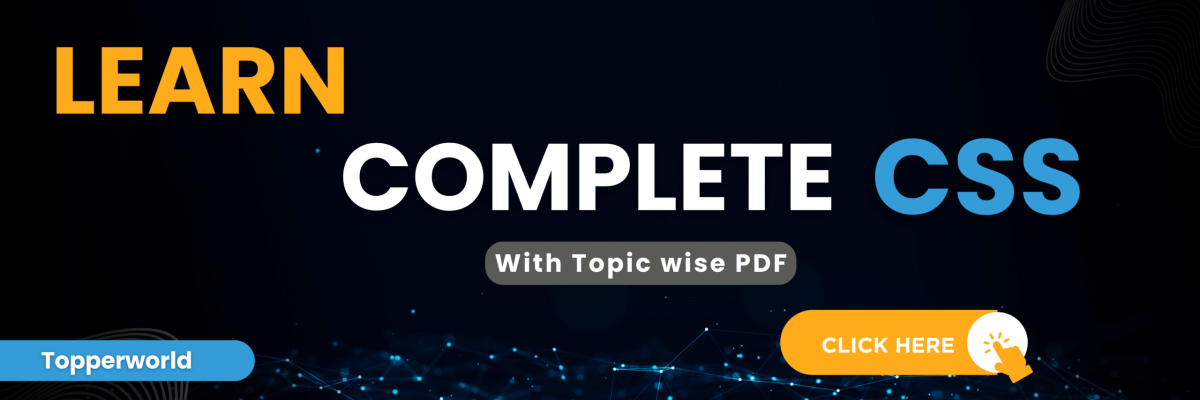CSS Tables
CSS tables provide a structured way to organize content in rows and columns, resembling traditional HTML tables but offering more flexibility and control over the layout. There are two main types of CSS tables: table layouts and flexbox/grid-based layouts. Each has its strengths and use cases, making them valuable tools for different scenarios.
To create a basic table, you can use the <table>, <tr> (table row), <td> (table data/cell), and <th> (table header) HTML elements. Once the structure is in place, CSS takes center stage for styling.
In the below PDF we discuss about CSS Tables in detail in simple language, Hope this will help in better understanding.
Table Styling Properties:
1. Borders and Spacing:
Use border properties to define the border style, width, and color. Adjust border-spacing to control the space between cells.
table {
border-collapse: collapse;
width: 100%;
}
th, td {
border: 1px solid #dddddd;
text-align: left;
padding: 8px;
}2. Background and Text Color:
Customize the table’s background and text color to enhance readability.
th {
background-color: #f2f2f2;
}
tr:nth-child(even) {
background-color: #f9f9f9;
}3. Responsive Tables:
In the era of diverse screen sizes, it’s crucial to create tables that adapt to different devices. CSS offers the overflow-x property to enable horizontal scrolling on smaller screens.
table {
overflow-x: auto;
display: block;
}4. Pseudo-Classes and Pseudo-Elements:
Leverage pseudo-classes like :hover to add interactivity or pseudo-elements like ::before and ::after for additional styling elements.
tr:hover {
background-color: #e0e0e0;
}
td::before {
content: "Data: ";
font-weight: bold;
}5. Colspan and Rowspan:
The colspan attribute allows a cell to span multiple columns, while rowspan lets a cell span multiple rows. CSS can be used to fine-tune the appearance of such merged cells.
td[colspan="2"] {
background-color: #d1f0ff;
} Benefits of CSS Tables:
- Responsive Design:
CSS tables make it easier to create responsive designs, adjusting the layout based on the screen size. Flexbox and Grid layouts, in particular, excel at creating fluid and adaptable structures. - Simplified Code:
Compared to traditional HTML tables, CSS tables often result in cleaner and more maintainable code. This is especially true when using flexbox or grid-based layouts, which allow for a more modular structure. - Versatility:
CSS tables are not limited to tabular data; they can be used for a wide range of layouts, including navigation menus, image galleries, and more. This versatility makes them a valuable tool for web developers.
Related Question
You can select a table in CSS using the table selector. For example, table { /* styles here */ } will apply styles to all tables on a webpage.
The border-collapse property is used to specify whether the table borders should be collapsed into a single border or separated. It can take values like collapse or separate.
You can center a table by applying the margin property to the table element. For example, margin: auto; will center the table horizontally.
The text-align property in CSS tables is used to horizontally align the content of table cells. It can be applied to the th and td elements.
Relevant
The Ultimate Guide to CSS
A Complete Guide to CSS
A Complete Guide to CSS
The Ultimate Guide to CSS
CSS Background WhatsApp Group Join
The Ultimate Guide to CSS
CSS Units – Explained with



